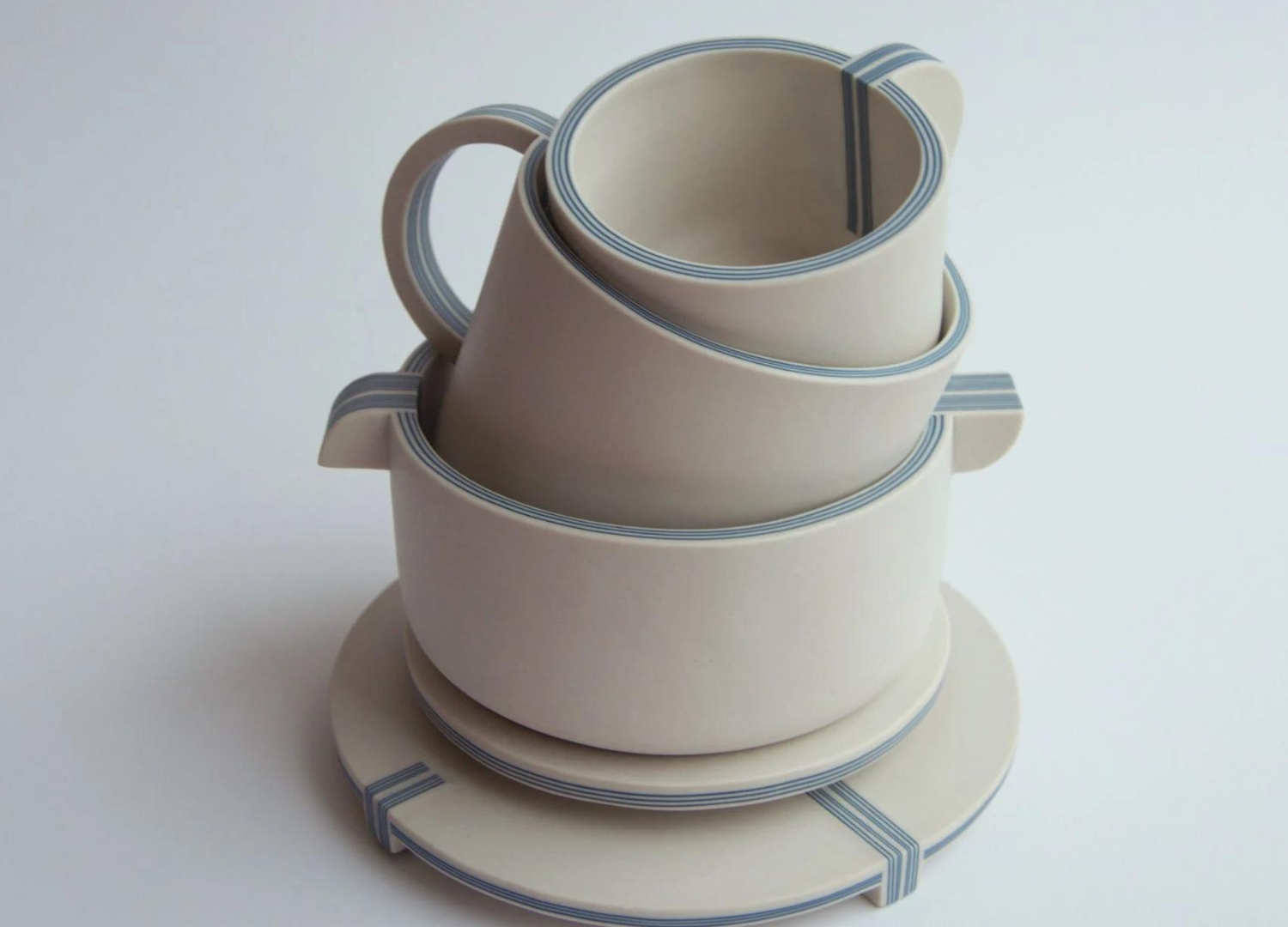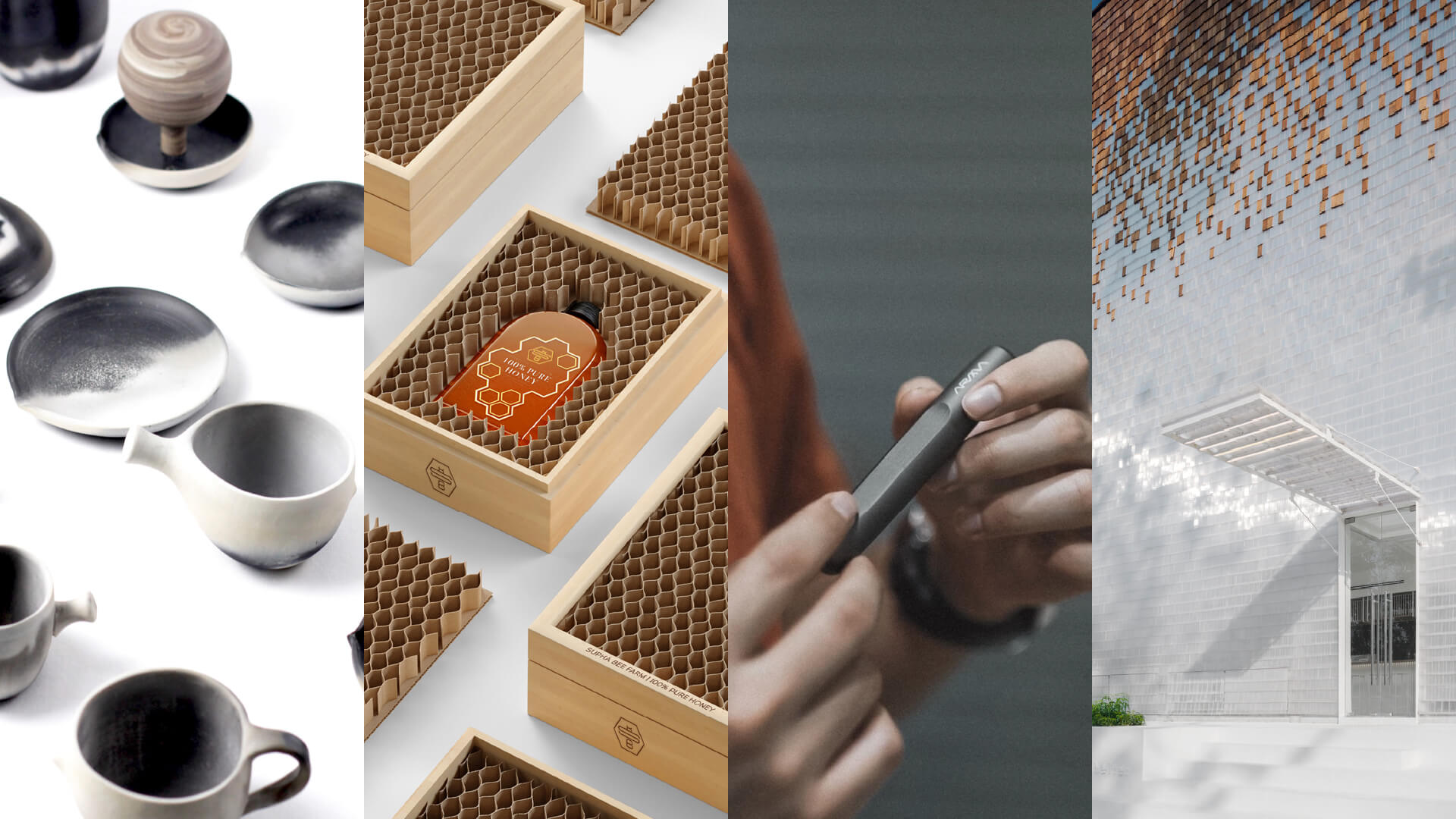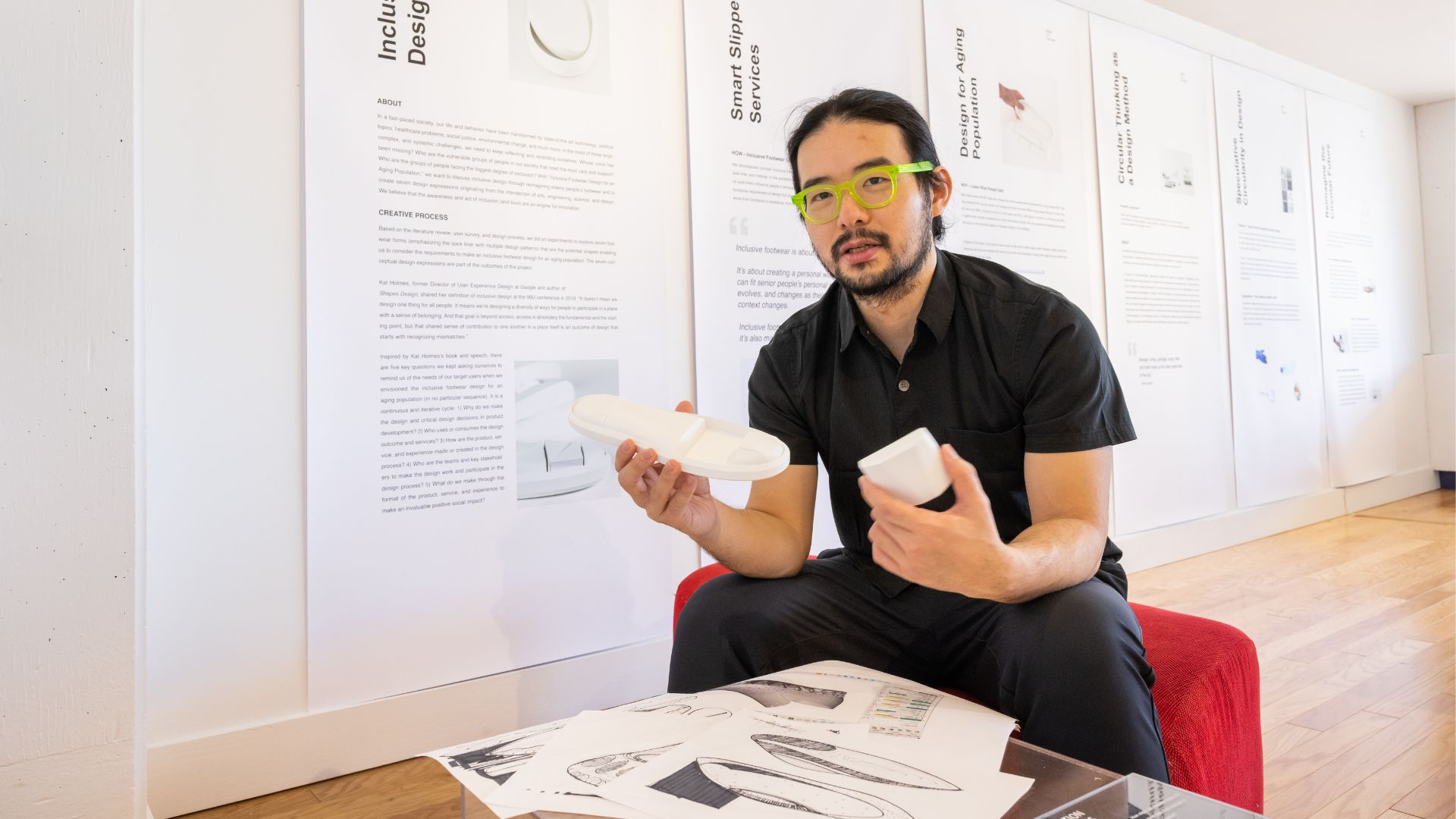Refreshing but rooted in culture – 6 kitchenware and tableware designs
Borrowing from the Japanese philosophy of wabi-sabi to traditional Chinese porcelain, brands and designers are now weaving the artisanal looking with a contemporary aesthetic

From Chris Fusaro to Kathleen Reilly, Yuting Chang, T Sakhi, Tongqi Lu, Tickle Quo, Julia Schwarz, Simiæn – today designers and brands are seamlessly crafting kitchenware and tableware products that are artisanal looking intertwined with a refreshing contemporary aesthetic.
For instance, Pasta Persa by Chris Fusaro is the innovative result of a series of experiments aimed at transforming pasta into kitchen tools, everyday utensils raised to the status of alluring works of art.
On the other hand, taking its name from the Japanese word for ‘to place’ or ‘to put’ – Kathleen Reilly presented Oku, an unconventional but functional folded knife that can be effortlessly hooked onto the rim of a plate.
Embodying a refined aesthetic that breathes new life into the dining space – “influenced by my western upbringing and experiences living in Japan, I set about redesigning the western table knife to improve its performance and keep its blade off the table!” shares Reilly.
Additionally, Yuting Chang turned the blue-and-white porcelain inside out in her tableware collection Plycelain – “blue-and-white ware is the most classical and influential type of Chinese porcelain but these days it’s largely slip-cast, with the decorative motifs applied by transfer-printing.
I wanted to utilize this mass production technique, meant to create large quantities of standardized products, while keeping the authenticity and individuality of the craftsmanship spirit!” Chang explains.
To bring people together, allowing them to interact and share moments over food and drink – studio T Sakhi further created the Tasting Threads tableware, functional poetic objects for everyday use.
Harmoniously infusing Murano glass with metal wires – these handmade pieces are a fusion of two Mediterranean cultures – “Lebanon and Italy have very similar ways of lifestyle, social norms, whether in social gatherings, in dining settings or their values in craftsmanship!” says the duo.
Informed by textures found in nature and wabi-sabi – an ancient Japanese philosophy that embraces the beauty of imperfections – Tongqi Lu fabricated the Slowly Rising glassware collection for Tickle Quo.
Lastly, referencing the appearance of Roman wine glasses, Julia Schwarz released the Licking Rocks tea set for Simiæn – a range of drinkware made to be utilized while drinking lichen tea.

Read on to know more about these six beautifully eclectic projects!
1. Pasta Persa by Chris Fusaro
After a result of tests motivated by a desire to craft kitchenware out of pasta and consequently figure out how to turn pasta into metal – Italian-Canadian artist and industrial designer Chris Fusaro presents Pasta Persa featuring strainers, colanders and trivets.

Focusing on striking experiments with form, materiality and fabrication, this collection creates a short-circuit between the meanings and references between the world of pasta and that of metals.
With his design ethos informing his exploration with materials – “the process relies on a unique combination of jewelry and foundry techniques to produce one-of-a-kind handmade and functional sculptures for the kitchen!” explains Fusaro.

Made entirely in bronze utilizing the cera persa (lost-wax casting) process – each and every object is nickel plated so that they can be exposed to water, oil and heat.
2. Oku by Kathleen Reilly
Informed by traditional Japanese table settings, Scottish artist and metalworker Kathleen Reilly designs Oku – a knife that comprises a handle folded 90 degrees from its blade.
Reilly was informed by chopstick rests, typically used to elevate the tips of chopsticks from table surfaces to prevent contamination.

Its folded shape allows the handle to be placed on a surface while the blade sits perpendicular away from the surface.
Alternatively – users can rest the knife’s blade along the edge of a plate or cutting board.
“This knife can be hooked onto the rim of a plate, creating intimacy between the two objects whilst improving cleanliness and maintaining stability!” she shares.

Additionally, to demonstrate the functionality of the knife – it’s packaged on the edge of a Japanese ginkgo wood cutting board.
Reilly fabricated the knife in collaboration with local craftsmen in Tsubame, Japan – a city renowned for its metalworking history.
“Oku is crafted from stainless steel that was created utilizing generations-old manufacturing techniques and the inner edge of the handle is curved to be comfortable to hold!” adds Reilly.
3. Plycelain by Yuting Chang
Taiwanese designer Yuting Chang showcases Plycelain – a ceramics collection that wears Chinese traditional blue adornments not on the outside, but layered internally.
“It’s called Plycelain in reference to its internally stratified structure, which resembles that of plywood!” says Chang.
The delicate linework, which decorates the otherwise minimal matte cream tableware, is built up by slip casting porcelain in alternating hues within a mold to form up to 29 layers in one product.

Revealing a cross section of the layered interior – these become visible where the pieces are trimmed into shape during assembly.
In this way, the pattern surfaces only on the very edges of each object – in the rim of the mug and its saucer or the handle of the bowl and espresso cup.
“Each layer requires precision and good timing to get right!
When the liquid slip is poured into a plaster mold – the plaster begins to absorb the liquid and form a layer of the cast on the inside walls!” she adds.

While the main body of each product is cast in a mold as one piece – the handles of the bowls and cups as well as the feet of the saucers are cut from slip-cast slabs.
The different elements are then further assembled together by hand – introducing a craft technique to what is otherwise a mass production process.
4. Tasting Threads by T Sakhi
Beirut design studio T Sakhi by Tessa and Tara Sakhi combines Venetian Murano glass with recycled metal threads as well as powder to make a textured glassware collection – Tasting Threads.
In a bid to achieve new textures, they incorporated metal debris into each of the pieces – they used aluminum, copper, brass and other metal powder collected from the waste streams of factories in their local area.

This handcrafted series encompasses long and short glasses, small shot glasses, flat plates and deep bowls.
Each and every piece is coloured in a variety of bright hues chosen to look like precious stones – ranging from alexandrite to amethyst, amber, ruby and cobalt.

A fusion of two Mediterranean cultures – the design duo worked with local craftsmen in Venice to sculpt the Murano glass into objects that reference traditional Lebanese shapes.
“We wanted to emphasize this strong duality with the craftsmen enriching the experience with their technique and expertise of mouth-blown Murano!” they explain.
5. Slowly Rising by Tongqi Lu for Tickle Quo
Informed by the Japanese philosophy of wabi-sabi – Chinese homeware brand Tickle Quo launches the Slowly Rising collection of glassware featuring textured glass surfaces.

Crafted by the brand founder Tongqi Lu, it includes tumblers, wine glasses, a coffee cup with a metal saucer as well as a vase with a dappled surface created from blown glass.
“When holding the glass, you can feel the bumpy surface, just as if you were feeling soil falling through your fingers!” shares Tickle Quo.

Additionally available in two shades of green – the glass containers are paired with metal elements, including the stem on the wine glass, the handle on the coffee cup and the saucer.
6. Licking Rocks by Julia Schwarz for Simiæn
Austrian designer Julia Schwarz releases Licking Rocks – a range of drinkware for her homeware brand Simiæn which is made to be utilized while drinking lichen tea.
Crafted from Pannonia Green stone sourced from Austria, this tea set includes teacups, espresso cups and accessories.

It’s intended to be utilized for drinking Simiæn’s lichen tea blend, created in collaboration with Saint Charles Apothecary – a readily available yet underused superfood.
Schwarz engineered a process that mills offcuts of Pannonia Green – a type of natural stone quarried in Austria in a resource-efficient way.

With a two-part design made up of a tubular stem topped by a hollow cylindrical vessel – the Licking Rocks teacups reference the appearance of Roman wine glasses.
This vessel can be placed atop the stem or into a snugly-fitting flat base.
“The collection additionally comprises – an espresso cup with a smaller form and thick base, a spoon rest, a tea strainer as well as a jug with a complementary base!” says Schwarz.






















